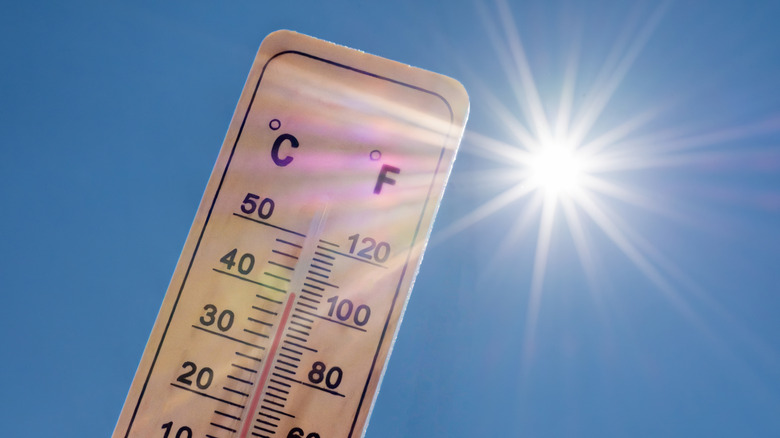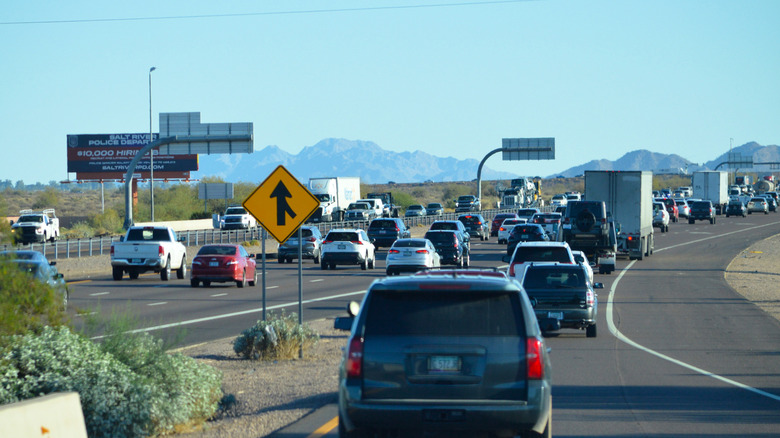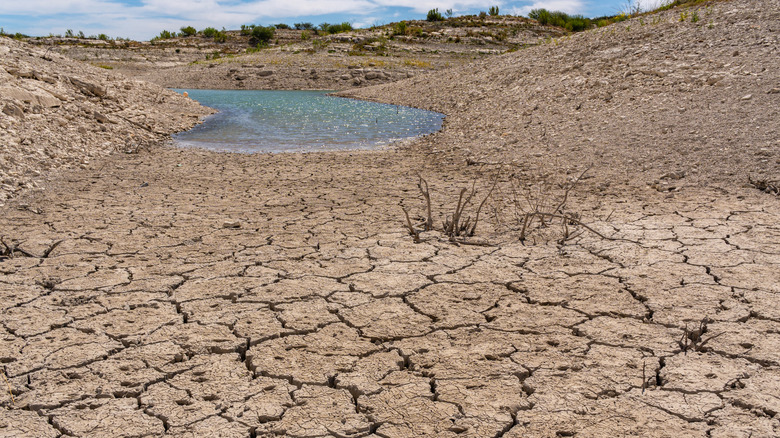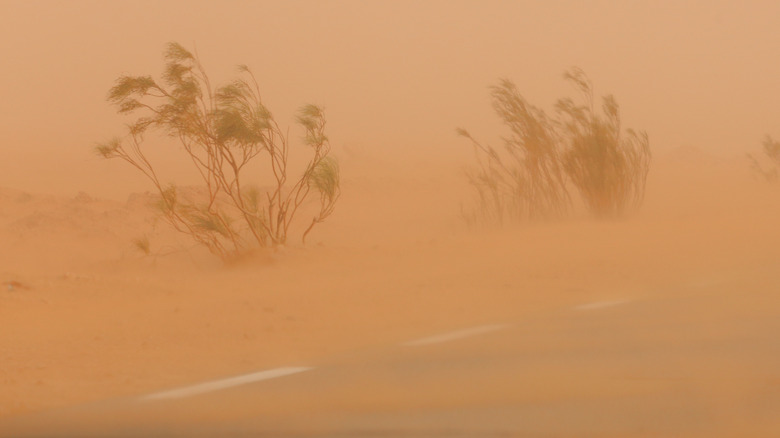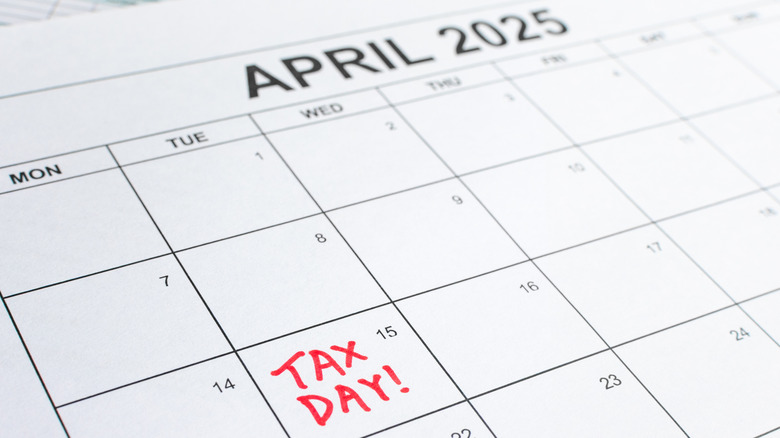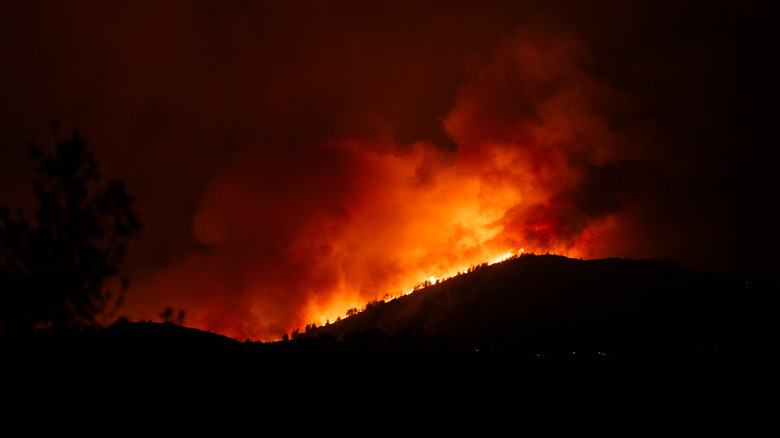13 Reasons Retirees Regret Moving To Arizona
Arizona has been a popular retirement destination for decades, but many newcomers and even current residents are rethinking that status. The Grand Canyon State is renowned for its year-round warm weather, attracting snowbirds looking to escape cold weather in other parts of the country. Plus, the stunning natural beauty of the Southwest has been a favored backdrop for retirees in their golden years. Over the years, Arizona's major cities and satellite towns have grown increasingly accommodating to seasoned residents with various retirement facilities, tax advantages, and targeted healthcare services. Despite all these compelling characteristics, Arizona's reputation as the ideal retirement haven is losing ground among some retirees.
Ironically, the state's sheer popularity is working to sour the very things that made it popular in the first place. A surging population crowds a once sparsely populated retreat, making it feel more like a vacation destination than a place to put down roots in the latter stages of life. This boom also weighs on the state's affordability. Other changes tarnishing Arizona's image as an ideal place for seasoned residents stem from societal, political, and even environmental factors. Admittedly, Arizona isn't one of the best or the worst states to retire, receiving mixed reviews from pensioners. This in-between placement can make it even harder for people to decide. Whether you're on the cusp of leaving the workforce or just starting your career, it's never too early to consider where you might spend your golden years. Looking at the top reasons retirees regret moving to Arizona can help inform your decision.
Extreme temperatures
The concept of snowbirds — people who escaped their home state for warmer weather, especially during wintertime — is closely intertwined with retirement. With no work and fewer responsibilities, why not whisk away to a warmer climate when you can? Well, that was the thought process that drove many retirees to Arizona for at least a few months out of the year, although many decided to plant roots given the year-round warm weather. Yet, the combination of a dry environment and accelerating climate change has turned Arizona's warm-weather appeal on its head. Instead of attracting people, the state's weather is starting to turn people away.
Sure, an average winter temperature between 60 and 70 degrees and 330 days of sunlight sound picturesque, but retirees living full-time in Arizona have to face the state's blistering summers. According to Weather Spark, the average high throughout the summer is a throat-drying 103 degrees, although it's common for summer heat to spike even higher. The record temperature recorded was 128 degrees, and meteorologists only expect these temperatures to increase as the planet warms up overall. This staggering heat renders daily retirement activities, such as walking, biking, or hiking, not only uncomfortable but actually dangerous to your health. Doctors recommend people limit their exposure outside in such conditions, but the whole point of moving to Arizona for many retirees is being outside more often.
Rising cost of living
It wasn't long ago when Arizona offered a relatively affordable cost of living, which was a major gravitational pull bringing retirees from around the country. As is the case with many cheap destinations, the resulting massive influx of budget-conscious residents ended up being the undoing of the state's affordability. Basic economics tells us that an increase in a population boosts demand for a limited amount of resources, causing a jump in related costs. Now, Arizona is a wallet-crunching 18% more expensive than the country's average, according to Rent Cafe. Unfortunately, this rising trend of living costs is only expected to continue as the state's economy struggles to absorb the population bubble.
Although retirees will spend more in their golden years in Arizona, they're not overspending equally in every facet of their lives. According to the Rent Cafe data, real estate is going to set back retirees by 15% when compared to the national average. You have to tack on an extra 4% for utilities. Non-essential costs, including clothing and entertainment, surge to 37% more than the norm. Although healthcare is a moderate 4% over the standard, these costs add up over time, especially in retirement. When you hit the store for weekly groceries, you'll be eating into your nest egg 3% faster than in other areas. Arizona isn't home to any place where retirees can live on Social Security alone.
Heavy traffic
After spending decades dealing with traffic to and from work, most retirees want nothing to do with crowded freeways or condensed downtown streets. Although the expansive deserts of the Southwest are one of the last places you'd expect to find congestion, Arizona is starting to experience heavy traffic issues, a problem usually relegated to the country's largest cities. Residents saw a brief reprieve during the pandemic, but congestion levels are now back up to historical highs. Recently, Axios noted Phoenix traffic even exceeded these rates by 10%, signaling a rising trend rather than a plateau.
The rate of people working from home is rising, but it's not able to keep up with the number of people moving to Arizona. The government has attempted to curb the problem by adding more freeways, but residents have yet to experience the benefits. There's even legislation in the works to increase the state's transportation tax to fund the construction of more infrastructure — yet another living cost for retirees to consider. Waiting in traffic to make daily runs might be enough to make people rethink retirement in Arizona, but this congestion results in several second-order consequences, such as safety risks, noise pollution, and harmful emissions.
Water shortage
Retirement is a time to relax, unwind, and toss your cares away, not pile up more worries, according to The Counter. Unless you want to think about insufficient water resources, you might want to think twice about spending your golden years in Arizona. The state has been plagued by a severe water shortage. A decades-long mega-drought combined with a rising population has strained Arizona's water supply. The state has had to turn to drastic measures to compensate, including importing water from out of state, rationing water usage, and encouraging residents to be more considerate about their personal water consumption. Over the next 25 years, the Colorado River — the population's main source of water — is expected to contract by 25%. During the same period, population growth is projected to boost water usage by 70%.
It might seem like science fiction, but the state's water shortage is an existential threat to the future of Arizona's major cities, where the shortfall is most acute. Admittedly, retirees might only be affected by this issue in higher water utility costs or seasonal water use restrictions. However, these inconveniences can transition into serious ramifications over the decades, especially as property investments could become less valuable if severe water concerns pop the booming real estate bubble.
Snowbird effect
Generally speaking, Arizona has attracted two kinds of retirees over the years: permanent residents and snowbirds. The full-time transplants move their entire lives down to the Grand Canyon State, often buying a home and making other financial commitments. On the flip side, the snowbirds only visit Arizona in the winter to escape the cold weather in their home states. These part-time residents often rent or time-share a property and keep most of their possessions at their full-time residence. While both types of retirees are pulled to Arizona for similar reasons, there's some tension between the two groups.
Some full-timers complain about the seasonal surge of snowbirds that flock to the state every winter. With a moderately-sized population year-round, Arizona's cities don't have the ideal infrastructure for a months-long surge of people. As mentioned before, the state already struggles with traffic congestion issues, which are only exacerbated by this wintertime increase in population. Resident retirees often complain about their favorite spots getting flooded with people, contributing to longer wait times and even surge pricing. Arizona is by no means the only state to suffer from this snowbird effect, but it's an important consideration among other negative variables discussed here.
Healthcare inefficiency
The average American spends $14,570 per year on healthcare, and that figure rises as individuals reach retirement age. The significant cost of healthcare, along with the increased complications associated with older age, makes healthcare availability and affordability a key consideration for pensioners. Regrettably, Arizona is ranked as the least-cost-effective health care system in the nation, according to Money Geek. It's also the second-worst in terms of healthcare access. That means retirees are spending more and getting less compared to other places in the country. A staggering 11% of residents in the Grand Canyon State are completely uninsured, leaving many retirees vulnerable to surprise healthcare costs.
The state also suffers from a low concentration of medical professionals compared to the population. For reference, there are only 65 doctors for every 100,000 people, one of the lowest ratios in the country. These issues are even more serious in rural parts of Arizona, although the cities still struggle to meet the healthcare needs of their communities, according to The Center Square. There are already several medical costs Medicare won't cover for seniors. Moving to a state where healthcare coverage is minimal, expensive, and unreliable can add further risk to a pensioner's golden years.
Poor education system
Retirees hoping to convince their children and grandchildren to join won't like that the state ranks nearly last in the country for public education. A WalletHub analysis placed the Copper State 48th in the nation when measuring the quality of public education. The in-depth report took a multi-variable approach, looking at pupil safety, teacher qualifications, class sizes, and state and federal funding. Arizona fell to the last position when comparing teacher-to-student ratios, meaning pupils received less time and attention from instructors. It was dead last in terms of student retention, with the state plagued by a high dropout rate. The highest ranking Arizona's public school system achieved was landing in the 33rd spot for digital education plans.
The U.S. as a whole is already falling behind several other countries in education outcomes, so Arizona's low ranking is even concerning than it might appear on the surface. Those abysmal numbers might convince some pensioners to look for the best places to retire outside of the U.S.This isn't a worry for snowbirds who live in Arizona temporarily and whose family members live in another state, hopefully with a better education system. However, close-knit families with seniors looking to bring their children and grandchildren out to the Southwest might want to reconsider.
Pedestrian danger
Pedestrian safety probably isn't even on your list of factors to consider when deciding the best places for retirees in the U.S. As you've seen thus far, Arizona triggers some unique considerations. Arizona Central notes that the state has an unusually high pedestrian fatality rate — a grim reality for retirees who enjoy outdoor activities. Interestingly, this isn't a concentrated issue. Tucson and Phoenix, two of the largest cities in Arizona, rank among the riskiest cities for pedestrians in the entire country. More specifically, Tucson is the third and Phoenix is the fourth deadliest in the U.S., only behind Albuquerque, New Mexico and Memphis, Tennessee.
According to data from the National Highway Traffic Safety Administration, about 700 pedestrians lost their lives between the two cities. In Tucson, there are 37.2 deaths for every 100,000 people. That number is slightly lower in Phoenix at 29.5 per 100,000 residents. Even Arizona's smaller cities pose a significant risk to retirees simply out and about on the streets. Mesa, a town of 500,000 people, has an annual pedestrian fatality rate of 13.2 per 100,000. While all accidents are tragic, that number isn't alarming in and of itself. However, pedestrian deaths have doubled in Mesa over the course of just five years, indicating a growing problem and an increasing risk.
Dangerous wildlife
Watching birds while relaxing on your porch or seeing some deer frolicking in a field on a walk are pleasant extras, but wildlife usually isn't a deciding factor when picking a retirement destination. Unless you're an avid hunter or bird watcher, you're paying much more attention to living costs and other variables that affect you daily. In Arizona, a land of extremes in many categories, wildlife might actually factor into your comings and goings. Retirees enjoy Arizona's beautiful nature, but the state is home to several dangerous and even deadly insects and animals. For example, the state has the highest concentration of rattlesnake species, with more than a dozen different kinds slithering around. There's even a large venomous lizard, aptly named the Gila Monster. Arizona Central notes the invasive Africanized Bee population has exploded by 1,000%, locally known as the killer bee for its aggressive and fearless behavior.
While higher than average, the chances of being harmed by these dangerous creatures in Arizona remain extremely rare. However, it's more about the psychological distress they can cause retirees, especially when attempting to enjoy the great outdoors. Nobody wants to be thinking about a life-threatening attack when hiking, riding bikes, or even strolling around the neighborhood. Beyond personal risk, these vermin can also wreak havoc on your property in an attempt to escape the state's destructive heat.
Air quality issues
With a relatively low population density and plenty of state and national parks, you might imagine Arizona as having clean air, uncontaminated by major populations and naturally filtered by the sweeping, untouched landscapes. That might've accurately described the state's history — before it became a popular retirement hotspot — but a lot has changed over the years. The combination of growing cities and rising congestion issues has led to pollution concerns. For nearly 10 consecutive years, Phoenix's air quality has run afoul of federal ozone regulations, Axios reported.
Think retiring outside of the cities will grant you pure air? Not quite. The Copper State's lack of vegetation and extremely dry weather leads to regular dust storms, which can negatively impact air quality. Locally referred to as haboobs, this unwelcome combination of high wind and dust clouds can kick up allergens, negatively affecting those with respiratory conditions. If you reason you're not at risk because you don't have allergies right now, be careful. The varied climate in the state has been known to elicit new allergies in retirees from other parts of the country.
Tax on retirement income
Arizona has earned a reputation as a tax haven for retirees looking to protect their nest eggs from the prying hands of Uncle Sam. While the Copper State does offer one of the lowest tax rates in the country, transplants from other parts of the country are often surprised by how much of their income or benefits is taxed. Unlike states with a true-zero percent income tax, Arizona levies a 2.5% surcharge on any annual income above $13,850 for individuals and $27,700 for joint-filers. Again, that's competitive compared to many states, but not quite the tax havens offered in other parts of the country.
Even if you're not finding genuine ways to earn money during retirement, you're not in the clear for taxation. Arizona taxes a lot of retirement-related withdrawals, benefits, and income. For example, you're on the hook for taking money out of IRAs, 401(k)s, and 403(b)s. Since capital gains are seen as standard income, retirees will also be paying taxes on anything generated from an investment. Many retirees are surprised and disappointed to find out that Arizona applies taxes to pensions, too. Alone, these taxes might not be a dealbreaker for those considering retiring in Arizona, but they're certainly a negative factor to consider.
Wildfire risks
Everyone has seen the horrific images and footage of destruction, damage, and hardship caused by wildfires in the U.S. Tragically, there's an overlap between the places retirees target for their golden years and areas of the country most prone to wildfires. The common denominator is hot weather. Although blazing heat might not be the spark for these wildfires, it acts as fuel, fanning the flames and making it harder for firefighters to put out. While not as bad as nearby California, Arizona has had its fair share of wildfire issues over the years. Similar to the warming weather, these hazards don't seem to be going anywhere anytime soon.
In fact, Fire Street reports that the entire state will see heightened wildfire risk for the next three decades. Beyond immediate danger, these fires reduce the living standard for retirees by polluting the air quality and threatening to destroy property investments. These wildfires and their increasing frequency impact seasoned couples in hidden ways, too. Insurance companies often charge more for property insurance and other types of coverage to offset the increased risk associated with the greater possibility of catastrophic events, such as wildfires.
Housing costs
As mentioned before, real estate costs in Arizona have grown considerably over the years. While that's wonderful news for early bird retirees who have owned property in the state for decades, it's a huge barrier to entry for newcomers. The average home in the Grand Canyon State is currently going for $422,446, according to Zillow. For context, the average retiree has around $334,000 in savings, according Nerd Wallet, which would mean buying a home in Arizona would instantly account for more than 100% of their nest egg — not the most financially sound beginning to a period of fixed income. Although there are annual fluctuations in average costs — for instance, housing costs dropped by 3% compared to last year — the broader trend is upward.
The financial equation doesn't get much better when looking at renting, either. The average cost of a two-bedroom home in Arizona is $1,778. Of course, that number rises in popular and heavily populated areas such as Phoenix or Scottsdale. You could feasibly find property lower than the national average in the boondocks, but that kind of defeats the purpose of retiring out of your home state. At this point, unless you have enough money to retire rich, skyrocketing real estate is enough to make many retirees reconsider the state for their golden years.

